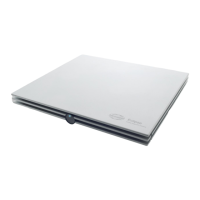D-0103906-D – 2019/03 Page 4 of 5
NOTICE
Due to High Voltage, only experienced technicians/ properly trained staff must check and change the
ground.
To check and verify the ground, various methods can be used.
1. A dedicated ground tester.
2. A voltage/impedance comparison from the wall outlet ground lead to a triangle of earth rods.
3. Ground should have max 8ohm, and 0.5V deviation compared to the true ground.
4. A more simple check is to use a Voltage Meter and measure directly from the wall outlet. Please verify
these specifications:
a. The Voltage between Phase (Hot) socket and Zero (Neutral) socket must be a stable 230V for
Europe /110V for US (country specific).
b. Check the Voltage between phase (Hot) socket and Ground socket, 230V for Europe / 110V for
US (country specific). The voltage value found in step a, should match the voltage value found in
this step (within 5V). If the recorded voltage is much less than the expected voltage (e.g., a voltage
reading of 50V for US), the ground is not connected to a true ground, even though you may be
able to see the lead in the wall.
c. Check the Voltage between Zero (Neutral) and Ground. It must be 0V. If the recorded voltage is
much less than the expected voltage, the ground is not connected to a true ground, even though
you may be able to see the lead in the wall.
Reducing noise in the EP15/25 module
1. Optimizing Settings
Changing the filter settings can reduce excessive environmental electrical interference.
With the EP software, go to File - System setup – Auto Protocols tab.
For 15ms tests (ABR-15), change the high pass filter to “100Hz 12/oct”.
Note Using a filter setting like this may reduce the amplitude in the ABR waveforms. However it may be
needed if it is impossible to obtain ABR curves without excessive electrical interference.
Change the stimulus rate so that it isn’t time locked to other electrical interference (e.g., 50/60Hz mains) can
reduce noise.
For periodic interferences, use the Minimize Interference option. Small random pauses are inserted between
stimulus presentations, minimizing the synchronization with electrical interference. These pauses do not
influence latency times or in any other manner, change the behavior of ABRs.
Please refer to the Eclipse Additional Information for more information.

